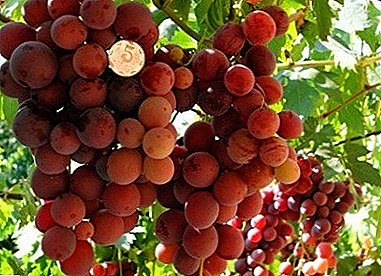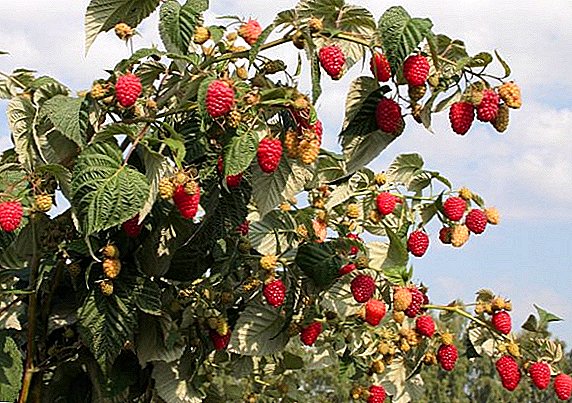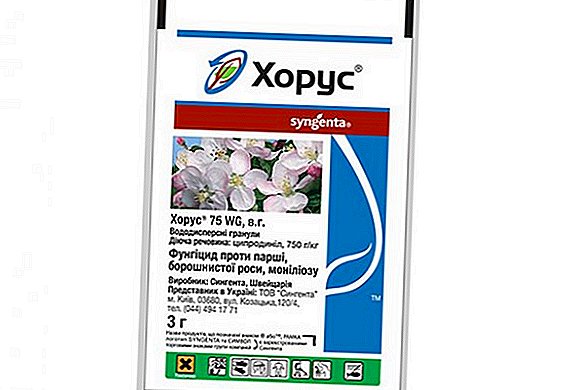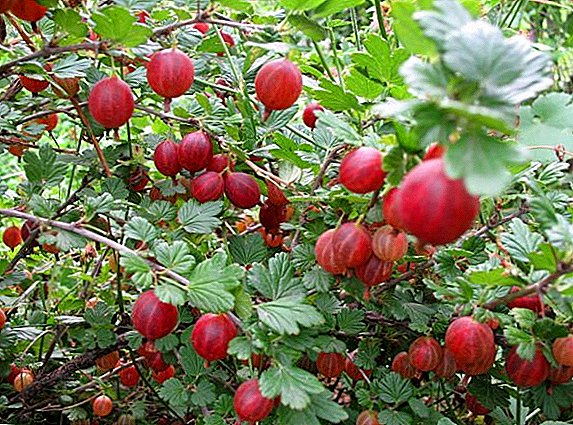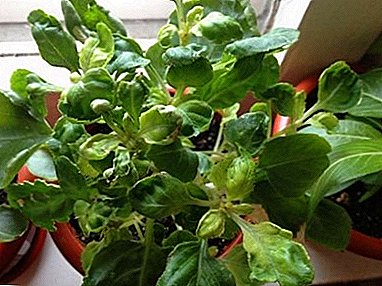
Many people know radish, but not everyone grows it in their garden. Meanwhile, it is not only tasty, but also very useful, healing vegetable. If you have not had time to get to know him, now is the time to do it in order to find a place in your beds for the radish in the upcoming season.
Its useful properties are known for a long time and are found in many recipes for the treatment of various kinds of diseases. This vegetable may differ from each other in shape and color. Regardless of whether black, white or green radish, it contains a certain set of vitamins and elements.
Why is it important to know the composition of the vegetable?
The composition of any product is the most important information about its usefulness and harmfulness. Available vitamins, elements of radish have a certain impact on the work of the human body. This impact can be both positive and negative. Therefore, you need to know about the properties of radish, what vitamins, how many calories and BJU it contains to use them to improve the performance of your body.
The use of certain substances in the presence of disease, has its own contraindications. Before eating a vegetable in large quantities, it is necessary to familiarize yourself with its composition.
Chemical composition and nutritional value
Fresh
100 grams contains:
- proteins - 1.9 g;
- fats - 0.2 g;
- carbohydrates - 6.7 grams;
- caloric content - 34.5 kcal.
Marinated
100 g radish with marinade of vinegar, salt, sunflower oil and water contains:
- proteins - 1.1 g;
- fat - 2.5 grams;
- carbohydrates - 4.3 gr;
- energy value - 44.1 kcal.
In a salad
100 g of radish salad, seasoned with butter, sour cream and salt contains:
- proteins - 2.2 g;
- fats - 19.1 grams;
- carbohydrates - 6.3 g;
- caloric content - 204.2 kcal.
Vitamins
| Vitamin | Quantity per 100g | Action on the body |
| Retinol (Vitamin A) | 3 mcg |
|
| Thiamine (Vitamin B1) | 0.03 mg |
|
| Riboflavin (Vitamin B2) | 0.03 mg |
|
| Pantothenic Acid (Vitamin B5) | 0.18 mg |
|
| Pyridoxine (Vitamin B6) | 0.06 mg | Essential for proper brain activity. |
| Ascorbic acid (Vitamin WITH) | 29 mg | Immunity strengthening |
| Tocopherol (Vitamin E) | 0.1 mg |
|
| Niacin (Vitamin B3) | 0.3 mg |
|
Glycemic index
 This index shows how a certain product increases the level of glucose in the blood.
This index shows how a certain product increases the level of glucose in the blood.
In foods with a low glycemic index, carbohydrates are evenly converted into energy. Therefore, the body can quickly spend it. And at a high index, some carbohydrates convert to fat, which is deposited.
Glycemic index of radish - 17. This is a low figure, which indicates the usefulness of the vegetable for people seeking to maintain a slim figure, as well as those who have elevated blood sugar levels.
Macronutrients
- Potassium. 100 g contains on average 357 mg. This indicator differs depending on the type of radish. This element is necessary for the proper functioning of the muscles and blood vessels of internal organs, especially the heart.
- Calcium. 35 mg is contained in 100 grams of vegetables. Ca affects the condition of bones and teeth, as well as the level of cholesterol in the blood.
- Magnesium. 22 mg - 100 grams of radish. It is necessary for healthy muscles and nerves.
- Sodium. 100 g of radish contains 13 mg. Its main function is the normalization of water - salt balance.
- Phosphorus. This element in 100 grams of radish - 26 mg. Important for proper metabolism.
Trace elements
- Of the trace elements, radish contains iron, which is necessary for oxygen to enter the tissues and organs of a person. 100 g of radish contains 1.2 mg of this element.
- The radish also contains phytoncides, which provide a specific taste of radish, protecting the body from viruses. In radishes with a spicy taste more of these substances, respectively, they are more useful.
- Contained in radish and essential oils that increase appetite, as well as participate in the preparation of the digestive system to digest food.
- In the vegetable root contains fiber, which affects the output of cholesterol, cleansing the body from harmful substances. It also affects the improvement of the digestive system.
- One of the important substances of radish is lysozyme. Its usefulness is explained by the ability to prevent the appearance and reproduction of bacteria, fungi. It also has an anti-inflammatory effect.
The benefits of root vegetables
- Normalization of the digestive system: getting rid of unnecessary substances, proper stools, improving metabolism, restoring intestinal microflora.
- Reduces the risk of atherosclerosis due to its ability to prevent the formation of plaques.
- Improves skin condition. In cosmetology, it is used as an external agent for skin whitening.
- Used in the treatment of cough. Radish juice is an expectorant.
- It has a diuretic and choleretic effect.
- Improve metabolism.
- It has an immunostimulating and restorative effect on the entire body.
- Removes swelling, removes excess fluid from the body.
- Acts as a natural antibiotic, heals and disinfects wounds.
- Used as a preventive measure for constipation.
Contraindications
 With small and non-daily doses of the use of radish does not harm the body. The constant use of vegetables is contraindicated in the following cases:
With small and non-daily doses of the use of radish does not harm the body. The constant use of vegetables is contraindicated in the following cases:
- In the presence of diseases of the gastrointestinal tract.
- Diseases of the kidneys and liver.
- With signs of allergies to essential oils.
- With gout.
- With individual intolerance to vegetable components.
- When pregnancy.
- After a heart attack.
Being a common, readily available vegetable, radish is a carrier of nutrients for the human body. To use them correctly, it is important to know all the properties of the radish. And the most important thing is how these substances act on a person in the presence of a particular disease. Proper use of vegetables will bring a lot of benefits to a person to maintain the health and strength of his body.




